Halfway up the slope of a mountain on the Chiufen-Shuanghsi road rests a silent wooden workers' hut. Chiufen resident Lin Hsin-hsiung takes us up a section of road and into the hut.
This hut is built next to an unobtrusive and ordinary mine pit opening, and were it not for the gold panning paraphernalia just outside it would be hard to tell that this was indeed a gold mine. The owner of the hut is 72-year-old Liao Ssu-ch'uan, who rents the mining rights from Lin. Lin is himself subletting, however, for the original rights belong entirely to the Taiyang Mining Corporation.
Right now Liao's mine is in the process of being dug. Every month he has to pay out NT$100,000 to support three or four workmen, pay for wood for tunnel supports, and pay for labor insurance. He says that he has already found gold in some of the mined material, but the amount is too small to bother refining it. He wants to press on with prospecting.
People who have never done mining before are reluctant to lay down such an initial capital investment. Liao, who has been in the business for fifty years, discovered a huge 100-plus tael chunk of gold while still in his teens. He remembers that when the "rock" would not break either when dropped or crushed, his heart leaped in the knowledge that he had discovered pure gold.
One hundred taels! Inconceivable! But in the heyday of gold mining this was no impossible fairy tale. It is estimated that since the beginning of the Ching dynasty as much as 32 metric tons of gold has been mined from Chiufen. It is no exaggeration to say that "the streets were paved with gold."
And seeing gold, whose heart wouldn't jump? But the question of whether or not greed gave way to violence in those years is an insult to the adventurers of the "gold rush." One Chiufen oldtimer said that although there were amongst those men some on the lam, or others who were orphans, everyone could get his share. In their small gold-mining community, nobody needed any written "rules of the game."
The modus operandi of that era was as follows: if you wanted to join the ranks of those looking for gold, then first you had to pay fees to Taiyang to secure the mining rights. When mining, each new pit had to be 30 meters from the nearest competitor. Then it was simply a race to get to the veins. If, for example, you were digging when you suddenly ran into someone else's mine, then you had no choice but to admit defeat, and stop digging. If two groups reached the same vein at the same time, they would share the find.
It is said that one of the competitors, a doctor, ordered his men to use explosives. When the miners were forced to flee by the smoke, the doc simply gave them a shot to reinvigorate them and sent them back in!
When the competition got really intense, these adventurers turned to military tactics. One example was the tactic of "luring the tiger out of the mountain." If you saw that a competitor was about to reach your intended target first, you could feign disinterest and begin digging in another place. The other might then also stop digging at the original place and switch to where you are now working. Then you could switch back to the original target, and by the time your opponent discovered that he had been had, the game would already be won.
And in order to follow the advice of the great Chinese strategist Sun Tse and "Know your enemy, know yourself," some resorted to planting spies in the competitor's camp. Clever mineowners would not get angry--they would get even, by planting false information on the spies in their midst!
According to the rules Taiyang would get 0.8 percent of gold mined. If you were caught trying to evade this, the penalty was to pay double at the least; at most, one could lose one's mining rights.
Whatever was mined would be brought to the Taiyang office, where all would witness the breaking of the seal. The mined material would then be ground down to grains the size of sand and placed in the water where some would float and some would sink, thus separating out the upper layer of soil and rock. Then mercury was used to bring together the remaining metals (including varying proportions of gold, silver, and platinum). These were wrapped in cloth and dried over fire. After the mercury was taken out, a gold ball would be left.
The initiated could use the naked eye to make an initial judgment about the purity of the gold. If the metal carried a red tint, this meant that it was 90 percent gold, while yellow meant 80, green 70, and white 60. But it was necessary to make an objective test, which required the use of the touchstone and bars.
A touchstone is a black stone which can be found near the sea. After this stone is rubbed with castor oil, the gold is rubbed lightly across its face to leave a gold trace. The color of the trace is then compared to that of various bars, whose purity is already known, to determine the purity of the gold being tested. The gold would then be exchanged for cash.
Because prospecting was lucrative in those days, money was spent freely. At that time Chiufen had a "Korean Saloon," where the young ladies had all come from Korea. It was not unusual at that time for a mine boss to give a gold lock to one of the actresses who impressed him.
Another distinctive feature of Chiufen was the large number of temples to the God of the Earth. Since prospecting for gold was really mostly luck, every mine had its temple dedicated to this god. The largest was Fushan Temple, which, according to research done by the scholar Lin Chih-how, dates back to before the Boxer Rebellion. The fate of the temple was a microcosm of the fate of Chiufen; when the gold ran out, both fell into serious decline.
At its height the area boasted 20,000 residents, and whatever was in Chiufen was the finest of its kind. A local official, Lien Wen-jui, remembers as a child that he looked with envy upon the bright lights of Chiufen, a "city that never slept."
But when the gold was exhausted, the fortune seekers streamed out. Now the area is a veritable "ghost town" of only about 3,000 residents.
But Chiufen has not breathed its last.
One reason is that the area's desolate beauty has attracted artists seeking solitude or inspiration. The most ambitious of these have been lobbying the county government for help in turning Chiufen into a Chinese Soho.
And Chiufen is starting to look after itself. Chiufen representatives in the Taipei County assembly have planned to turn the area into the first museum of gold mining.
Finally, some people abroad have used satellites to locate further gold reserves in the Chiufen/Chinkuashih area of north Taiwan. Several foreign companies have already approached the Ministry of Economic Affairs about mining rights. As yet no conclusion has been reached; however Chiufen's Lin Hsin-hsiung and Liao Ssu-ch'uan have already begun explorations.
Is this the beginning of a new "golden age" for Chiufen? Well, we can certainly say that prospects are looking up!
[Picture Caption]
This 56-tael gold ball testifies to Chiufen's former glory and prosperity.
The distance between Chiufen, resting on the hillside, and the fishing village by the sea is like that between the heavens and the earth.
Tens of thousand of tael of gold have been refined in this work-room.
Liao Ssu-ch'uan often sits by the opening of the mine, checking out the minerals his workmen bring up.
Many of the gold-miners of old turned to coal mining when the gold ran out.
These are the Earth God and Goddess from Fushan Temple.
Today most of the young people have left Chiufen.
Artists have become the new neighbors of the residents of Chiufen.
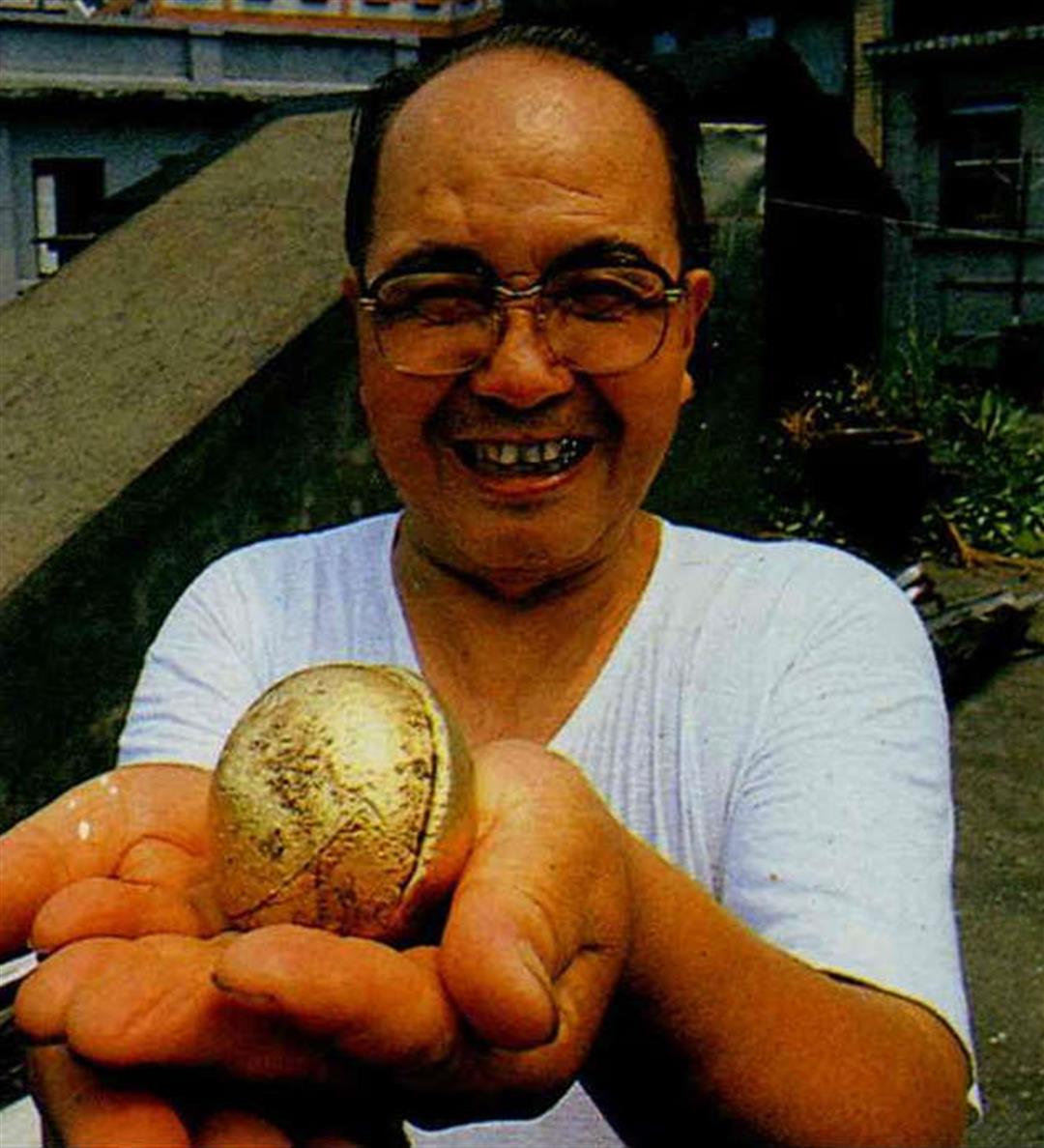
This 56-tael gold ball testifies to Chiufen's former glory and prosperity.
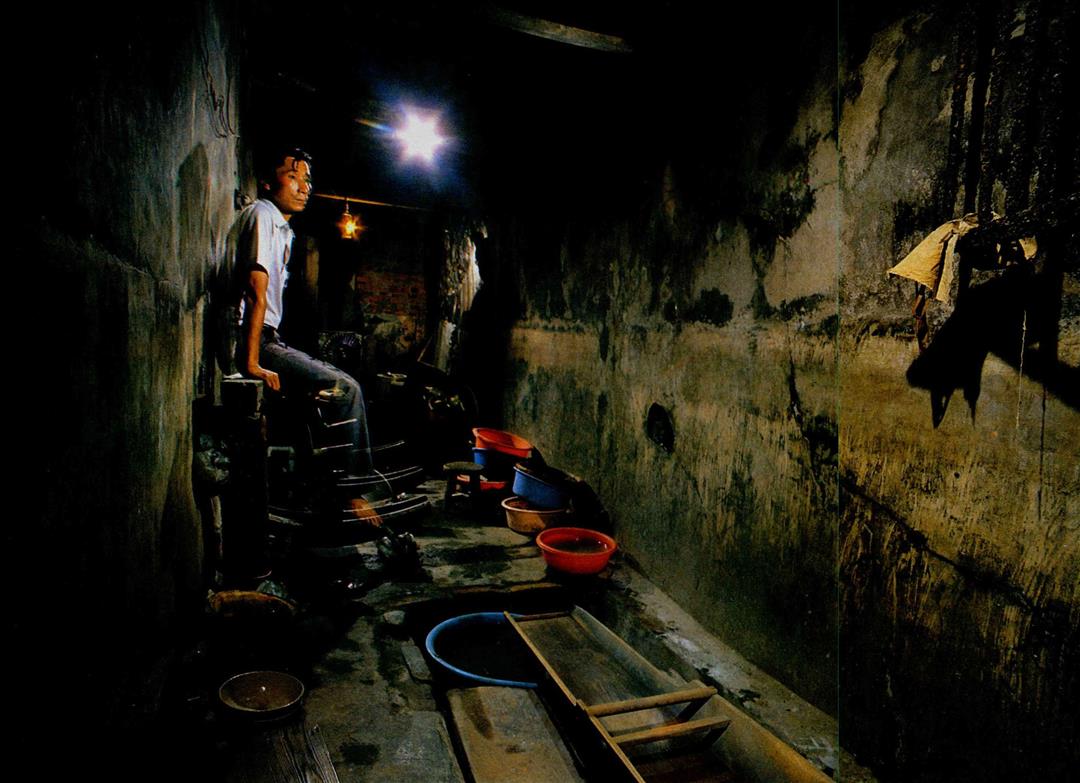
Tens of thousand of tael of gold have been refined in this work-room.
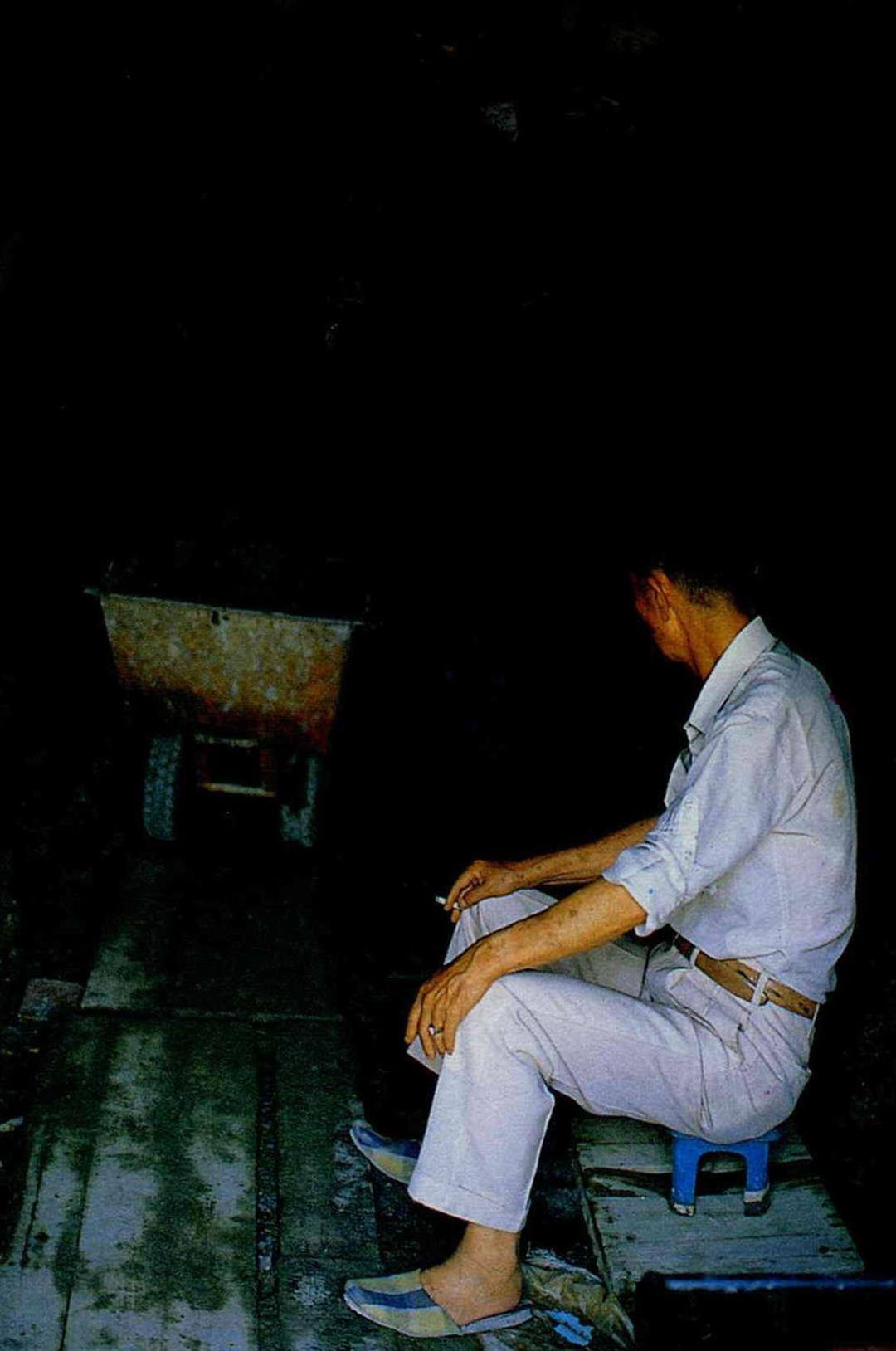
Liao Ssu-ch'uan often sits by the opening of the mine, checking out the minerals his workmen bring up.
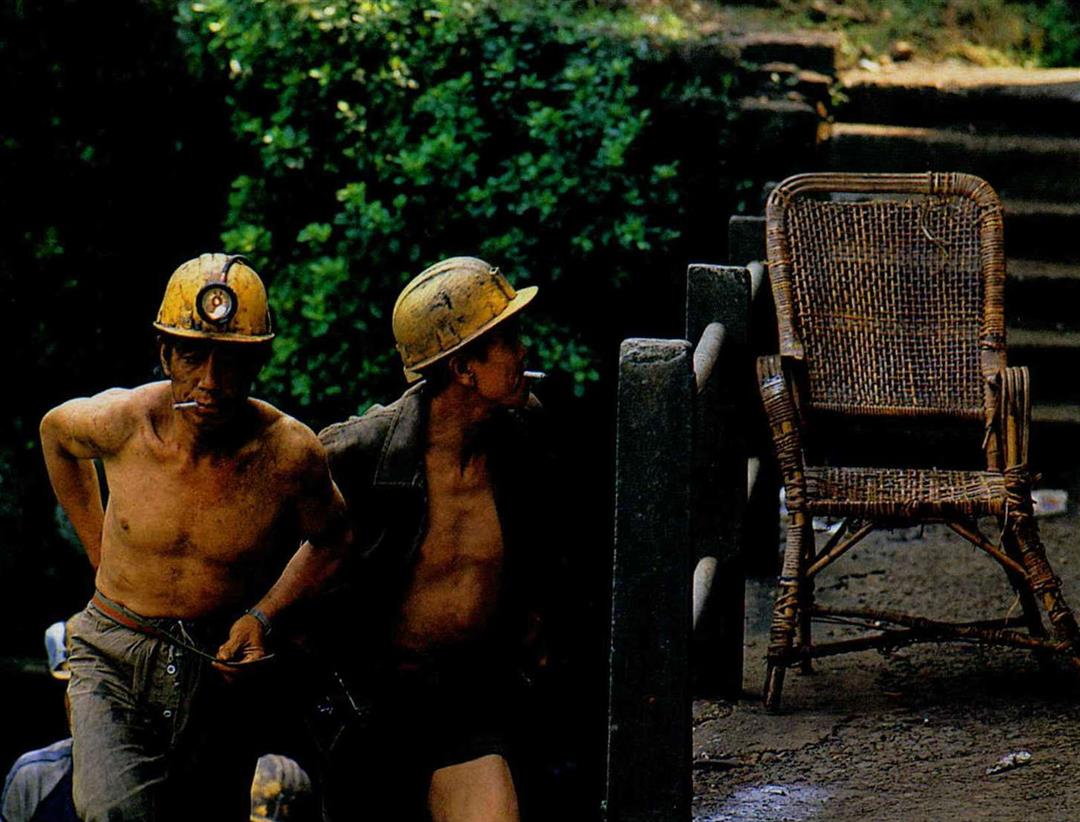
Many of the gold-miners of old turned to coal mining when the gold ran out.
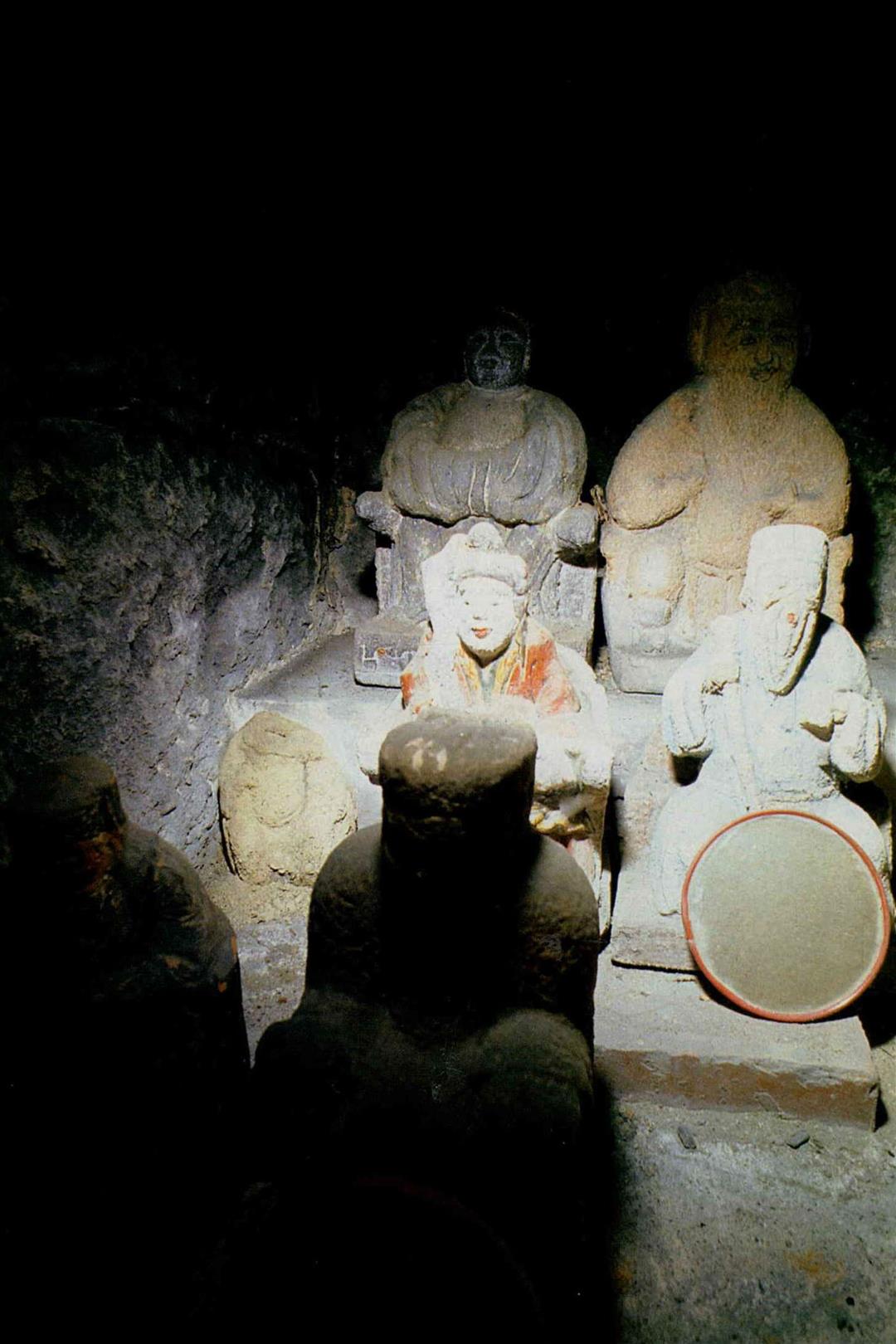
These are the Earth God and Goddess from Fushan Temple.
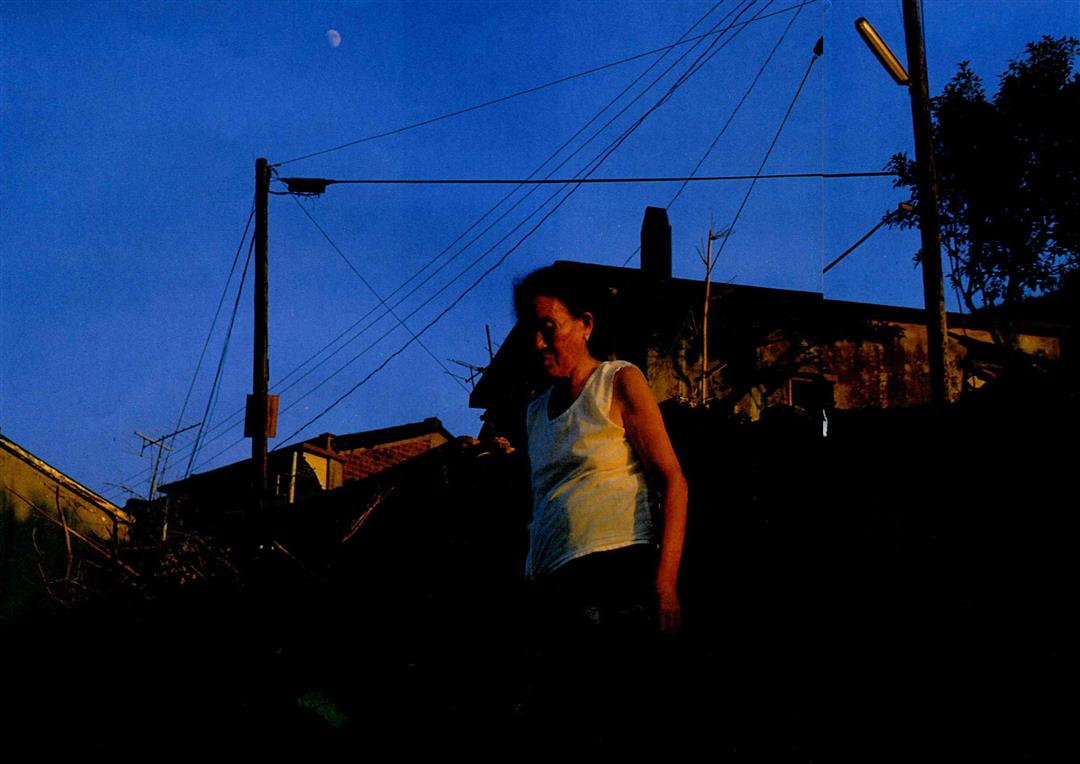
Today most of the young people have left Chiufen.

Artists have become the new neighbors of the residents of Chiufen.